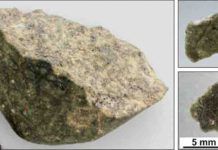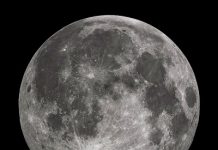
(Reuters) – As club sandwiches go, this undoubtedly is the biggest one in the solar system.
Scientists said on Friday that Jupiter’s moon Ganymede may possess ice and liquid oceans stacked up in several layers much like the popular multilayered sandwich. They added that this arrangement may raise the chances that this distant icy world harbors life.
NASA’s Galileo spacecraft flew by Ganymede in the 1990s and confirmed the presence of an interior ocean, also finding evidence for salty water perhaps from the salt known as magnesium sulfate.
Ganymede, which with its diameter of about 3,300 miles (5,300 km), is the largest moon in the solar system and is bigger than the planet Mercury.
A team of scientists performed computer modeling of Ganymede’s ocean, taking into account for the first time how salt increases the density of liquids under the type of extreme conditions present inside Ganymede. Their work followed experiments in the laboratory that simulated such salty seas.
While earlier research suggested a routine “sandwich” arrangement in which there is ice at the surface, then a layer of liquid water and another layer of ice on the bottom, this new study indicated there might be more layers than that.
Steve Vance, an astrobiologist at NASA’s Jet Propulsion Laboratory in California, said the arrangement might be like this: at the top, a layer of ice on the moon’s surface, with a layer of water below that, then a second layer of ice, another layer of water underneath that, then a third layer of ice, with a final layer of water at the bottom above the rocky seafloor.
“That would make it the largest club sandwich in the solar system,” Vance said in a telephone interview. “I suppose I’m also a fan of club sandwiches. My fiancée points out that I order them every time we go out to eat.”
Ganymede boasts a lot of water, perhaps 25 times the volume of Earth’s oceans. Its oceans are estimated to be about 500 miles (800 km) deep.
With enough salt, liquid water on Ganymede could become so dense that it sinks to the very bottom, the researchers said. That means water may be sloshing on top of rock, a situation that may foster conditions suitable for the development of microbial life.
Some scientists suspect that life first formed on Earth in bubbling thermal vents on the ocean floor.
“Our understanding of how life came about on Earth involves the interaction between water and rock. This (research) provides a stronger possibility for those kinds of interactions to take place on Ganymede,” added Vance, whose study was published in the journal Planetary and Space Science.
Ganymede is one of five moons in the solar system thought to have oceans hidden below icy surfaces. Two other moons, Europa and Callisto, orbit the big gas planet Jupiter. The moons Titan and Enceladus circle the ringed gas planet Saturn.
“We’re providing a more realistic view into ocean structure in Ganymede’s interior. We’re showing that the salinity has a tangible effect on the ocean,” Vance said.
Note : The above story is based on materials provided by Will Dunham; Editing by Lisa Shumaker For Reuters










